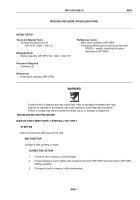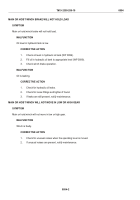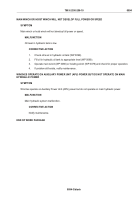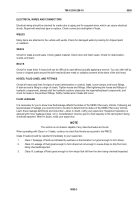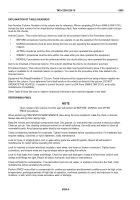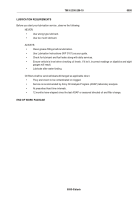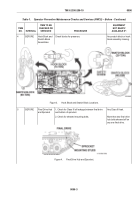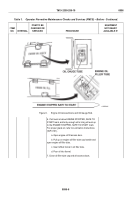TM-9-2350-256-10 - Page 512 of 796
EXPLANATION OF TABLE HEADINGS
Item Number Column. Numbers in this column are for reference. When completing DA Form 5988-E (WP 0131),
include the item number for the check/service indicating a fault. Item numbers appear in the same order that you
must do the checks.
Interval Column. This column tells you when you must do the procedure listed in the Procedure column.
•
BEFORE procedures must be done before you operate or use the equipment for its intended mission.
•
DURING procedures must be done during the time you are operating the equipment for its intended
mission.
•
AFTER procedures must be done immediately after you have operated the equipment.
•
WEEKLY procedures must be done within one week after you have operated the equipment.
•
MONTHLY procedures must be performed within one month after you have operated the equipment.
Item to be Checked or Serviced Column. This column identifies the item to be checked or serviced.
Procedure Column. This column lists the check or service that must be performed to know if the equipment is
ready or available for its intended mission or operation. You must do the procedure at the time stated in the
Interval column.
Equipment Not Ready/Available If: Column. Faults that prevent the equipment from being mission-capable are
listed in this column. If you determine that a fault exists on the vehicle as listed in this column, DO NOT
OPERATE THE VEHICLE. If unable to correct the fault, note it on DA Form 5988-E (WP 0131), and notify
maintenance immediately.
Other Table Entries. Be sure to observe all special information and notes that appear in the table.
PERFORMING PMCS
NOTE
Upon receipt of this vehicle, the first user will perform all BEFORE, DURING, and AFTER
PMCS procedures.
When performing PREVENTIVE MAINTENANCE, take along the tools needed to make the check or service.
Always take along clean wiping rags.
Keep the vehicle and individual components clean. Dirt, grease, oil, and debris may conceal a serious problem.
Clean as you go. Use cleaning compound solvent on all metal surfaces. Use mild soap and water to clean all
nonmetallic parts. Avoid spraying water directly into engine air intakes.
Check all attaching hardware for looseness. Tighten loose hardware before operating vehicle. For hardware that
requires staking, lockwires, or nylon fasteners, notify maintenance.
Look for loose or chipped paint, rust, or gaps where parts are welded together. Report all bad welds to
maintenance for repair before operating the vehicle.
Look for cracked or broken electrical insulation, bare wires, and loose or broken connectors. Tighten loose
connectors, and ensure wires are in good shape before operating the vehicle.
Look for fluid leaks from hoses and fittings. Check for wear and damage to hoses and fluid lines, and be sure
clamps and fittings are tight. Report all stains, wet spots, and leaks to maintenance.
Check all fluids for contamination. If contamination such as rust, water, or sediment is found in the fluid, notify
maintenance before operating the vehicle.
Perform PMCS more often to compensate for continuous operation and abnormal conditions such as high or low
temperatures, prolonged periods of high rate of operation, continued operation in sand, and exposure to dust,
moisture, or salt, which may cause excessive wear or damage.
TM 9-2350-256-10
0095
0095-4
Back to Top


